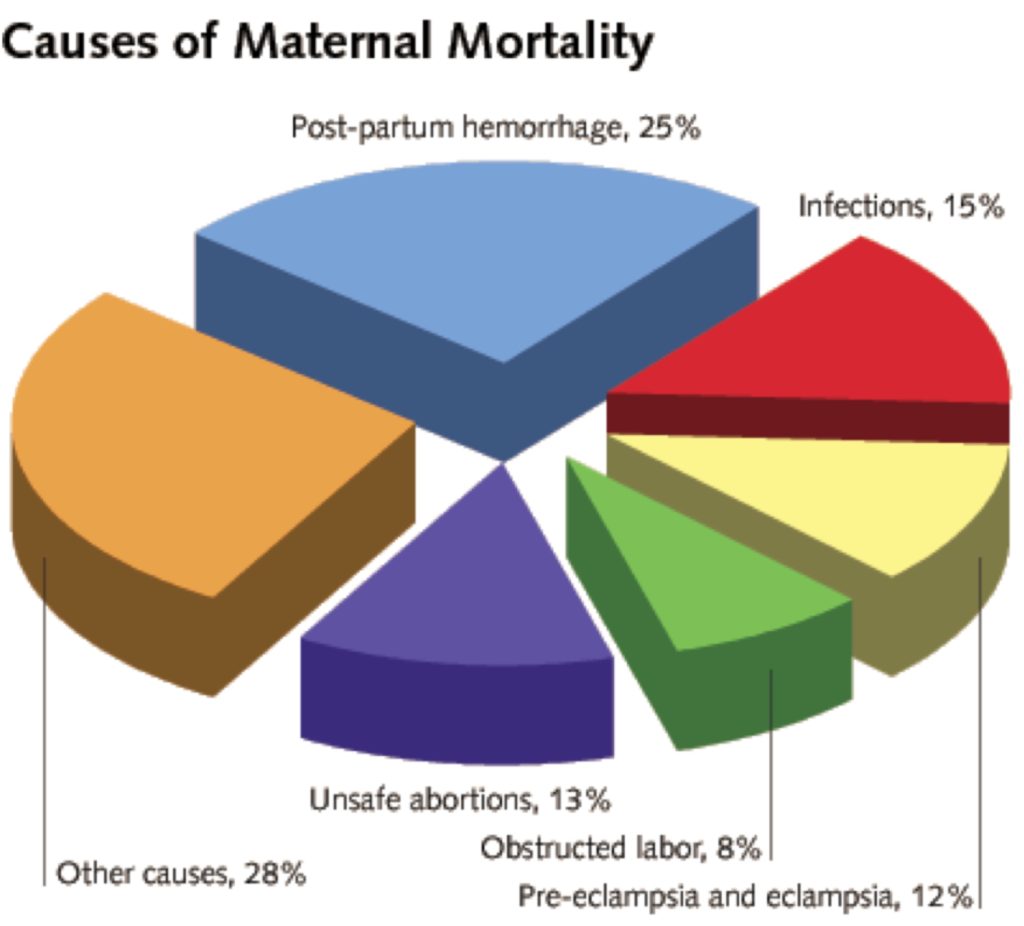
Tragedy aptly describes the emotions surrounding the death of a pregnant woman. Until recently, grave markers in the United States frequently stated “died in childbirth.” And while such deaths have greatly diminished in North America, they remain frequent in the lower resource nations. Haitian women, for example, have a saying “I am going to sea to catch a new baby, but the journey is long and dangerous, and I may not return.”
What is the most common cause of postpartum hemorrhage, that is, bleeding following delivery? Failure of the uterus to contract normally causes bleeding to continue. This atony is the leading cause of postpartum hemorrhage, and this risk is one of the reasons why deliveries should always take place in the facility with immediate access to life-saving intervention. Unfortunately, in many nations well equipped birthing centers are accessible only by wealthy persons.
But an even more common clause of maternal death is the category of “Other Causes.” What are these? Malaria is particularly lethal towards pregnant women. Chronic diseases like asthma and valvular heart disease caused by dramatic fever are also among the frequent other causes of maternal mortality.
What is the implication of these facts? Most maternal deaths occur at the time of labor and delivery. Our advocacy for development of skilled birthing centers, such as the work of the Global Birthing Home Foundation and Save The Mothers, is particularly strategic to curb maternal tragedy.
